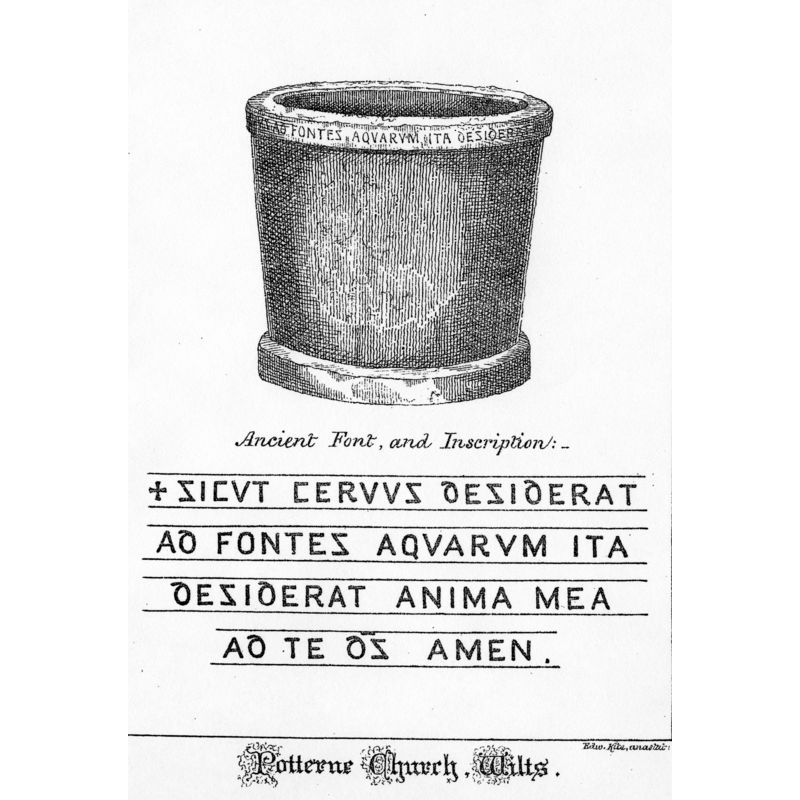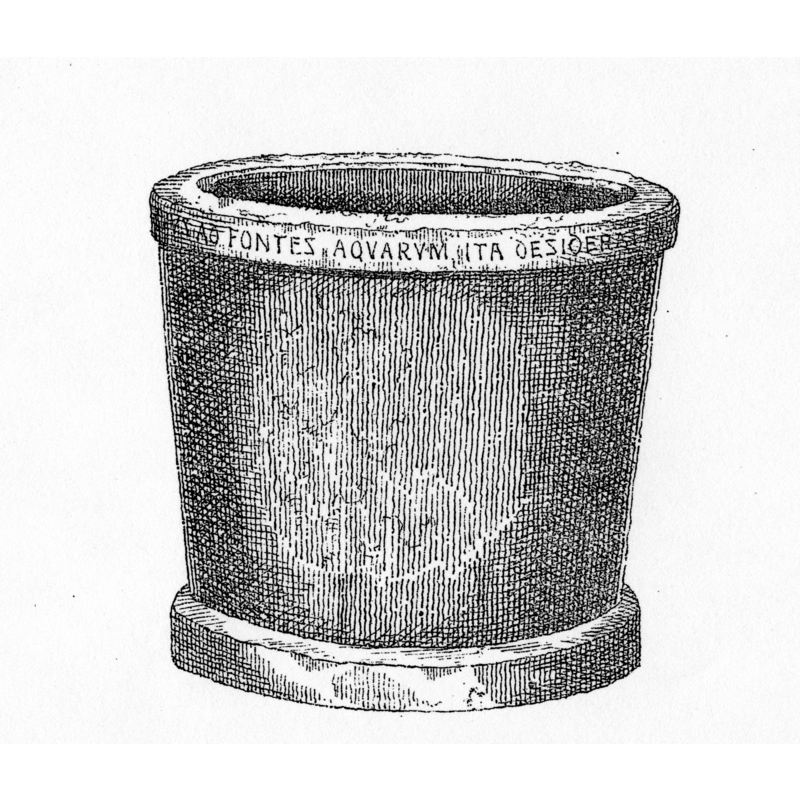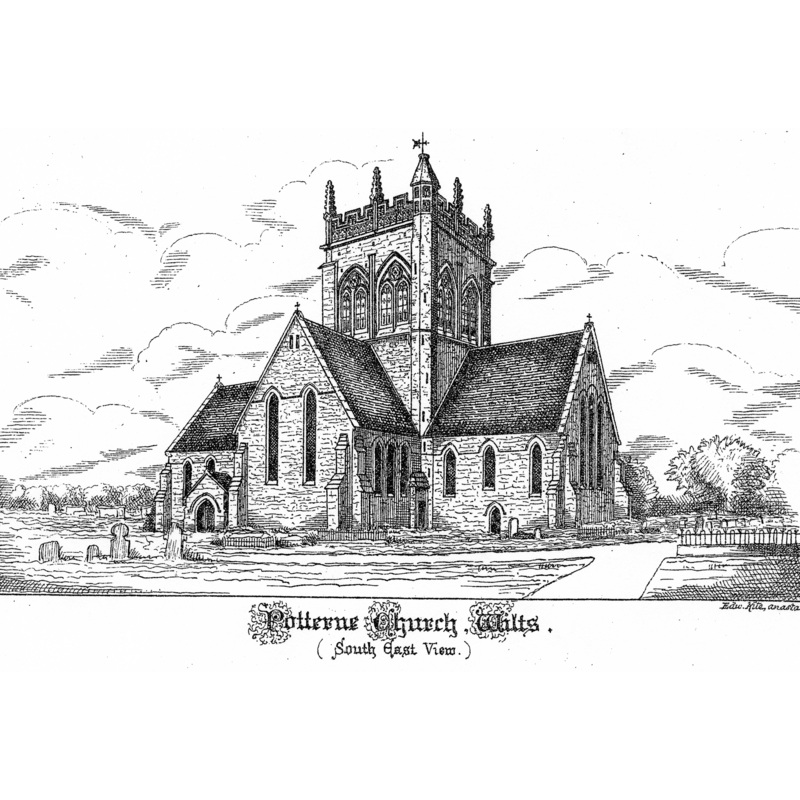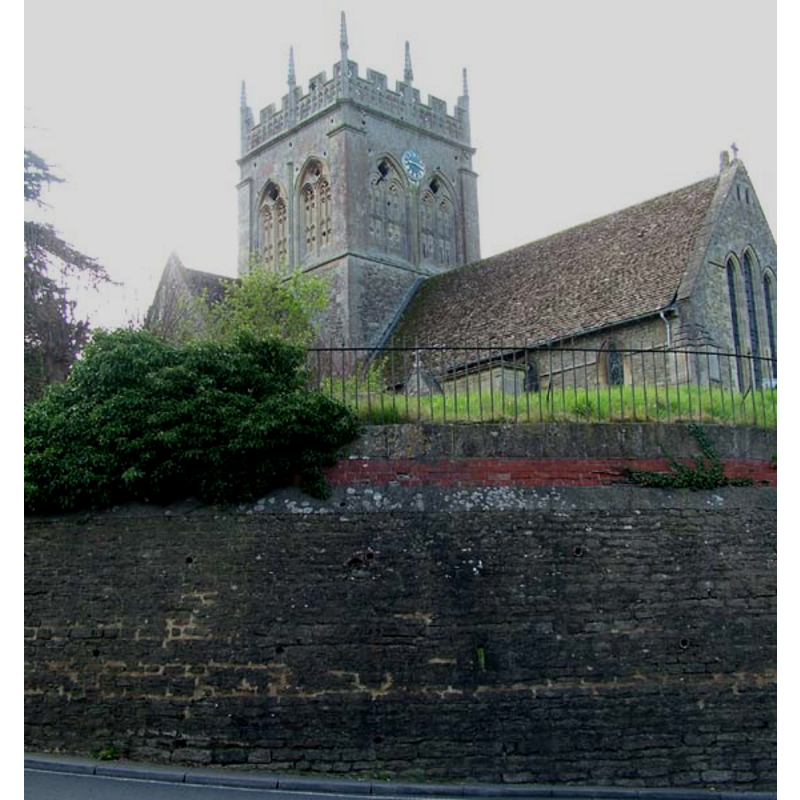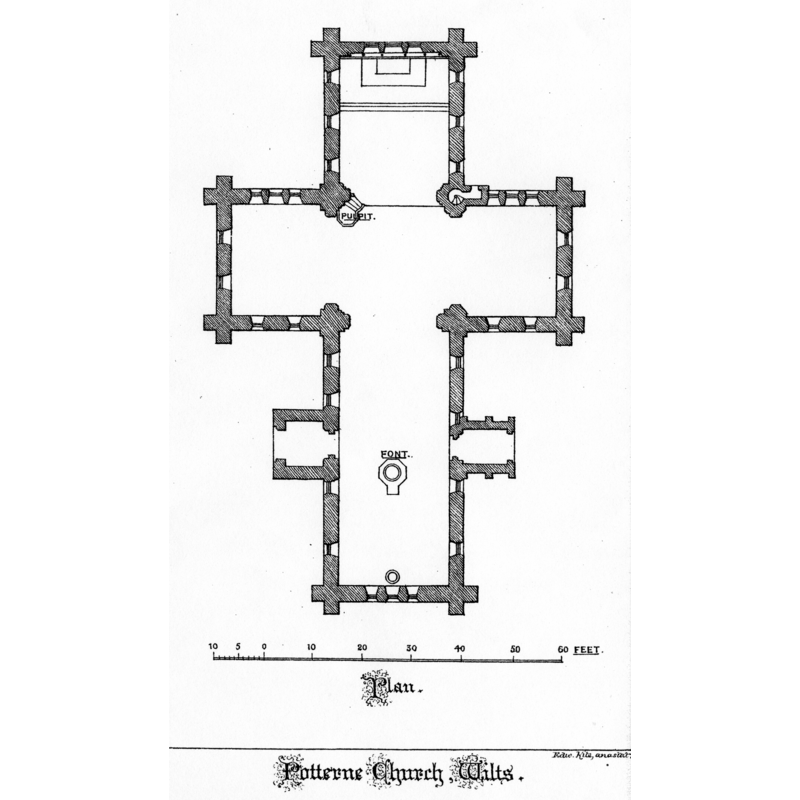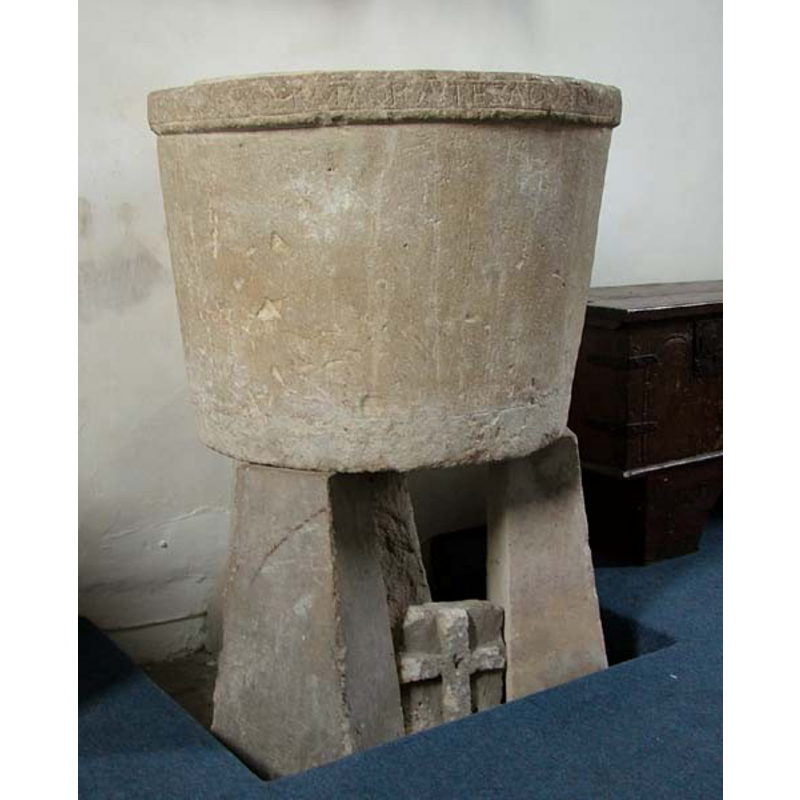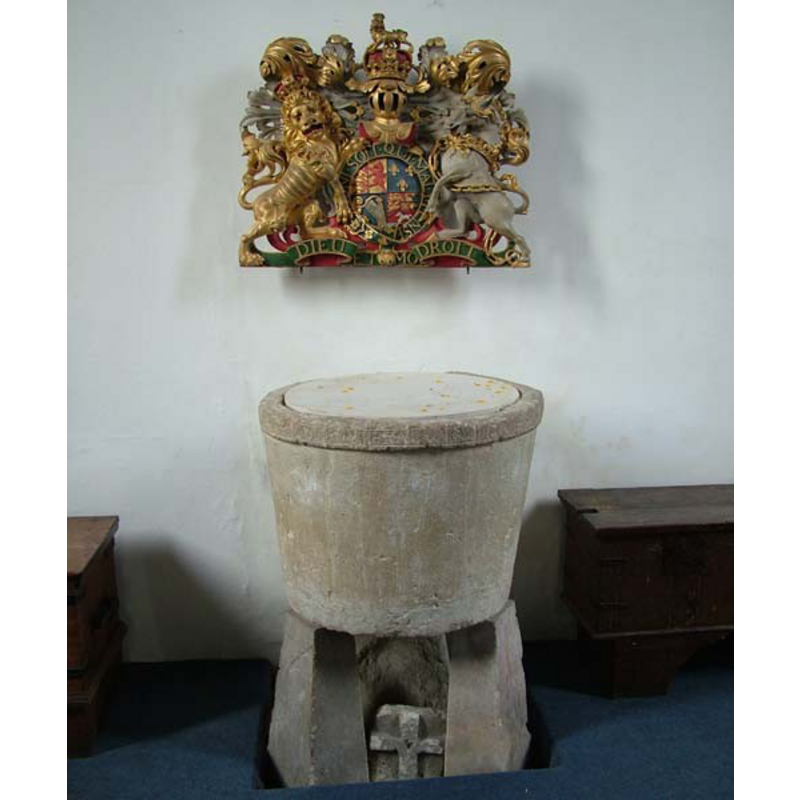Potterne No. 1
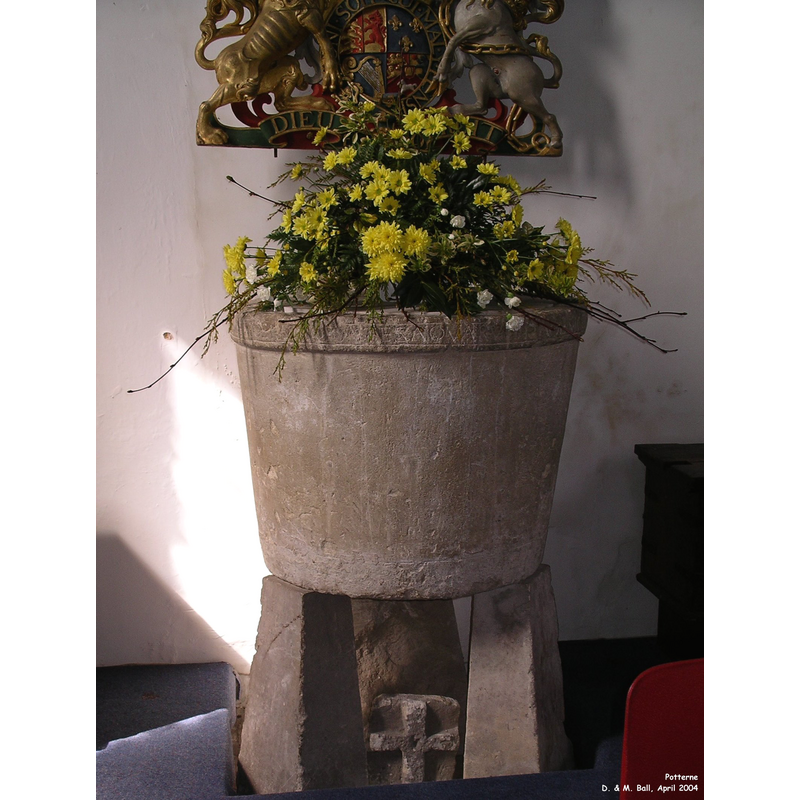
Image copyright © Duncan & Mandy Ball, 2004
Standing permission
Results: 17 records
design element - motifs - moulding - flat moulding
inscription
view of basin
view of church exterior
view of church exterior - plan
view of church exterior - southeast view
Copyright Statement: Image copyright © the Wiltshire County Council Libraries & Heritage, 2008
Image Source: digital photograph in the Wiltshire County Council Libraries & Heritage [http://www.wiltshire.gov.uk/community/images_search.php?atoz=&offset=20&item=Potterne&community=&choice=aa&dir=Next] [accessed 23 November 2008]
Copyright Instructions: Standing permission
view of church interior - plan
Scene Description: note the location of the fonts: the later font is in the centre of the nave, towards the west end, between the north and south entrances; the old font is right against the west wall
Copyright Statement: Image copyright © [in the public domain]
Image Source: digital image of an Illustration by Edward Kite, in Jones (1876)
Copyright Instructions: PD
view of church interior - plan
view of church interior - plan
view of church interior - plan
view of font
view of font
Copyright Statement: Image copyright © the Wiltshire County Council Libraries & Heritage, 2008
Image Source: digital photograph in the Wiltshire County Council Libraries & Heritage [http://www.wiltshire.gov.uk/community/images_search.php?atoz=&offset=20&item=Potterne&community=&choice=aa&dir=Next] [accessed 23 November 2008]
Copyright Instructions: Standing permission
view of font
view of font
view of font - detail
view of font in context
Copyright Statement: Image copyright © the Wiltshire County Council Libraries & Heritage, 2008
Image Source: digital photograph in the Wiltshire County Council Libraries & Heritage [http://www.wiltshire.gov.uk/community/images_search.php?atoz=&offset=20&item=Potterne&community=&choice=aa&dir=Next] [accessed 23 November 2008]
Copyright Instructions: Standing permission
INFORMATION
FontID: 01087POT
Object Type: Baptismal Font1
Church/Chapel: Parish Church of St. Mary the Virgin
Church Patron Saints: St. Mary the Virgin
Church Location: Eastwell Road/Rookes Lane, Potterne, Wiltshire, SN10 5LZ
Country Name: England
Location: Wiltshire, South West
Directions to Site: Located on the A360, 3 km SW of Devizes, N of the Salisbury Plain
Ecclesiastic Region: Diocese of Salisbury [formerly in the diocese of Sarun]
Historical Region: Hundred of Potterne and Cannings
Font Location in Church: Inside the church, below the W window [a/o 1990]
Century and Period: 10th - 12th century, Pre-Conquest? / Norman?
Cognate Fonts: the fonts at Wantisden (Suffolk) and at Canterbury St. Martin (Kent), also built of many blocks
Credit and Acknowledgements: We are grateful to the Wiltshire County Council Libraries & Heritage [http://www.wiltshire.gov.uk/community] for their photographs of church and font. We are also grateful to Duncan & Mandy Ball, of www.oodwooc.co.uk, for their photograph of this font, to Rita Wood for the identification of the font material and to Pol Herman for his help in documenting this font
Font Notes:
Click to view
Noted in The Antiquary (isssue of February 10th, 1872, p. 30): "Digging in the nave of Potterne church a few days ago, the workmen came upon a curious old font, which must have been there centuries ago. The inscription upon it appears to be 1st verse of the xlii Psalm:-- '+SICUT CERVUS DESIDERAT AD FONTES AQUARUM ITA DESIDERAT ANIMA MEA AD TE DEUS. AMEN.'" Described in Jones (1876) with illustrations by Edward Kite. Jones mentions three fonts in this church at the time, and he describes this one as "the most interesting object in the whole Church, [...] undoubtedly of great antiquity, and very probably dates from before the Norman Conquest", buried right under the new 13th-century font, where "it remained until, during the recent [1872] restorations, it was discovered and exhumed." Jones (ibid.) dates it "probably [...] of the tenth century", and gives an account of the opinions on the object by "Mr. Christian, the architect under whose direction the recent restoration was carried out" [Jones obviously respected the views of the said architect, who, in regards the dating of the font, states: "I should without hesitation assign the date of its execution to early Saxon times"]. The Wiltshire Archaeological and Natural History Magazine (vol. XIX (1881): 132) reports on an excursion to Potterne [inter alia] by members of the British Archaeological Association, on the occasion of their congress meetin at Devizes. The group of archaeologists visited the church on 17 August 1881: "a good deal of attention was directed to the old font, which was found buried beneath the one now in use while the excavations were being made on the restoration of the Church a few years ago. The font is circular in form, very massive, and it is conjectured that it belonged to an early Saxon Church supposed to have existed in another part of the parish, where traces of earlier interments are to be found." Romilly Allen (1888) informs that the font "was discovered in the year 1872, buried four feet below the present one. It is of oolite, and both shaped like a tub and made like one, the bottom being a separate stone fixed in with lead". He provides the measurements for the font and, based on the evidence of the lettering and the design and shape, suggests a date for the font "to the end of the eleventh century." On the Latin inscription -"which was examined by many of the members of the Devizes Congress in 1880", Romilly Allen (ibid.) identifies it as "the text from the Vulgate version of the Psalms (xlii, 1)" and states that "Three of the letters are of forms similar to those used in Saxon times, namely, the S made like Z, the square C, and the D made like an O with a tail at the top facing to the left." Described and illustrated in Bond (1908): "Nearly always the bowl of a font is hollowed out of a single block. Exceptions are the ancient font at Potterne [...] and the famous font at St Martin's, Canterbury". (ibid.) [he later quotes Romilly Allen verbatim (ibid.) The basin of this font is bucket-shaped and plain except for a protruding rim on which appears an inscription [regarding the inscription Bond notes (ibid.) that the text of the first two verses of Psalm 42: 1 are "not from the Vulgate, but from an alternative version of St Jerome used in the Anglo-Saxon baptismal service. Bond (ibid.) also states that the font was originally unmounted, but that it has "been supplied with legs [3] at some modern restoration" [cf. Romilly Allen supra about the base ca. 1888]. Bond (ibid.) refers to Romilly Allen who attributed a date of the end of the 11th century to this font, and agrees (ibid.) that a date to the end of the 11th or beginning of the 12th century can be assigned "on account of the palæological peculiarities of the inscriptions". The Wiltshire Notes and Queries issue for June 1895 carry a communication by Ephraim Gardiner in which he reproduces a statement by the architect of the 1872 renovation, Mr. Christian, in which the said architect remarks on the characters of the inscription: "Those most nearly resembling them are to be found in a copy of St. Cuthbert's Gospels in the British Museum, the date of which is given as the beginning of the eighth century", and on the date of the font: "I should without hesitation assign the date of its execution to early Saxon times." Described also in Cox & Harvey (1907) as a Saxon font inscribed with text of Psalm xlii, and that it wast discovered in 1872, buried four feet below its successor. Noted in Holmes (1922) as "the archaic tub-shaped font, now standing at the end of the church"; Holmes gives the text of the inscription quoted from Psalms xlii: 1. Noted and described in Buck (1950), who identifies the stone: "very similar to that known as Corsham Stone, a grey oolite of fine grain", and informs about its appearance before the three-support base was added [as seen in Kite's engraving of ca. 1876]: "The present bottom stone of the font is separate from the tapering sides and the junction was made watertight by running in molten lead. This suggests that the original bottom, which was probably not so thick as the present stone, became damaged and was replaced in the manner now seen; it is most unlikely that the inner basin would have been hollowed out without leaving a bottom to it in the original stone.. A large jagged hole, certainly not in connection to its use as a font, has been made in the present bottom stone, which implies that when the old church fell into ruin this font, like many others, was appropriated for secular use, say, on a neighbouring farm; later, when its original purpose was appreciated, it was taken to the church and buried beneath the present font in order to preserve it from further desecration [...] There is no lead lining in the inner basin; also, there are no marks of fastenings for the cover [...] The inner edge of the rim, however, is recessed as if to take a flat cover." With regards the inscription and the date, Buck (ibid.) notes: "The lettering has been recut since the font was disinterred [...] The date of the font is considered to be late tenth or early eleventh century, that is, during the revival of church-building initiated by St. Dunstan. This has been confirmed by comparing the lettering with manuscripts of this period in the British Museum [...]" Betjeman (1958) has: "inscribed Norman tub font". Davey (1964) argues convincingly that the font belonged originally to an early baptistery [10th-12th centuries], where it was sunk at floor level, later being moved to the new church; he argues that the inscription may have been added later. Taylor (1965-1978) argues for an even earlier date using the inscription, which he states, matches the text of the so-called Roman psalter used in Anglo-Saxon England -8th century to ca. 950, instead of the one in the Gallican psalter of later date; Taylor resolves : "There thus seems little doubt that this inscription belongs to the tenth century or earlier." As further proof of his argument Taylor (ibid.) adds that the Anglo-Saxon angular shape of the letters C and S, "which has been used in support of an Anglo-Saxon date, [...] is used throughout at Potterne". Taylor (ibid.) further goes into details about the location of this font in the original wooden church, where excavation have "disclosed a circular seating cut into the greensand floor of the south porticus with dimensions which match those of the base of the font." [cf. Romilly Allen supra for the mention of a round base] Noted in Pevsner & Cherry (1975): "Font. Tuib-shaped, Anglo-Saxon, with a Latin inscription along the rim". The photograph [ca. 1908?] in Bond (1908) is different from the Kite engraving in Jones (1876), and shows the a flat moulding around the lower edge that matches the one around the upper rim, without an inscription [was the font altered between those two dates? or, was the lower moulding just an additional platform used before the basin was mounted on the three stone blocks, as shown in Bond (1908)? This font is not in use for baptismal purposes [cf. Index entry for Potterne No. 2 for the 13th-14th century font now in use at the church - no description is available for the third font in this church and therefore is not listed in this Index]. Rita Wood identifies the material of the font as 'Bath stone', an oolitic type of limestone [e-mail to BSI 28 July 2021].
COORDINATES
UTM: 30U 568973 5686988
MEDIUM AND MEASUREMENTS
Material: stone, limestone [oolitic limestone / Bath stone]
Number of Pieces: [cf. Font notes]
Font Shape: bucket-shaped (mounted)
Basin Interior Shape: round
Basin Exterior Shape: round
Drainage Notes: no lining
Rim Thickness: 8.75 cm [calculated]
Diameter (inside rim): 70 cm*
Diameter (includes rim): 87.5 cm* [86.25 cm**]
Basin Depth: 37.5 cm*
Height of Basin Side: 66.25 cm*
Basin Total Height: 66.25 cm* [70 cm**]
Notes on Measurements: *[in Romilly Allen (1888: 168) -- NB: his measurements are identical to those in Jones (1876), where they probably came from] -- ** [variants in Buck (1950); originally gven in inches]
INSCRIPTION
Inscription Language: Latin
Inscription Notes: Romilly Allen's and Bond's version, after expansion of the contractions: "Sicut cervus desiderat ad fontes aquarum, ita desiderat anima mea ad te Dominus. Amen" [=As the hart panteth after the water brooks, so panteth my soul after thee, O God. (in the "appointed" King James' version, Cambridge U.P. translation) [cf. FontNotes for Taylor's dating argument in relation to this inscription]
Inscription Location: below the upper rim of the basin
Inscription Text: ["+ SICVT CERVVS DESIDERAT AD FONTES AQVARVM / ITA DESIDERAT ANIMA MEA AD TE D[eu -or- ominu]S. AMEN"]
Inscription Source: Jones (1876); Romilly Allen (1888: 168); Cox & Harvey (1907: 166); Bond (1985 c1908: 107); Holmes (1922); Davey (1964: 120) with slight variants
REFERENCES
Victoria County History [online], University of London, 1993-. Accessed: 2013-02-07 00:00:00. URL: https://www.british-history.ac.uk.
Allen, J. Romilly, "On the Antiquity of Fonts in Great Britain", XLIV, Journal of the British Archaeological Association, 1888, pp. 164-173; p. 168-169, 173
Betjeman, John, An American's Guide to English Parish Churches (including the Isle of Man), New York: McDowell, Obolensky, 1958
Bond, Francis, Fonts and Font Covers, London: Waterstone, 1985 c1908
Buck, A.G. Randle, "Some Wiltshire fonts. Part I", LIII, CXCIII (December 1950), The Wiltshire Archaeological and Natural History Magazine, 1950, pp. 458-470; 461-463 and plate II (1-2) between pp. 464 and 465
Cautley, Henry Munro, Suffolk churches and their treasures, Woodbridge: The Boydell Press, 1982
Cox, John Charles J., English Church Fittings Furniture and Accessories, London: B.T. Batsford, 1922
Cox, John Charles, English Church Furniture, New York: E.P. Dutton & Co., 1907
Cox, John Charles, Nottinghamshire, London: Allen, 1912
Davey, Norman, "A Pre-Conquest Church and Baptistery at Potterne", 59, The Wiltshire Archaeological and Natural History Magazine, 1964, pp. 116-123 and pl. VII; p. 116-123 and pl. VII
Holmes, Edric, Wanderings in Wessex: an Exploration of the Southern Realm from Itchen to Otter, London: Robert Scott Roxburghe House, [1922]
Jones, W.H. (canon), "Potterne", XVI, XLVIII, The Wiltshire Archæological and Natural History Magazine, 1876, pp. 245-286; p. 278-282
Long, E.T., "Dorset church fonts", 44, Proceedings of the Dorset Natural History and Antiquarian Field Club, 1923, pp. 62-76; p. 66
MacGibbon, David, Ecclesiastical Architecture of Scotland: from the Earliest Christian Times to the Seventeenth Century, Edinburgh: D. Douglas, 1896-1897
Stocker, D.A., "Fons et origo: The Symbolic Death and Resurrection of English Font Stones", I (1997b), Church Archaeology, 1997, pp. 17-25; p. 19
Taylor, H.M., Anglo-Saxon Architecture, Cambridge: Cambridge University Press, 1965-1978
![showing the inscription from Psalm 42 [cf. Font notes and InscriptionArea]](/static-50478a99ec6f36a15d6234548c59f63da52304e5/compressed/1081123008_compressed.png)
